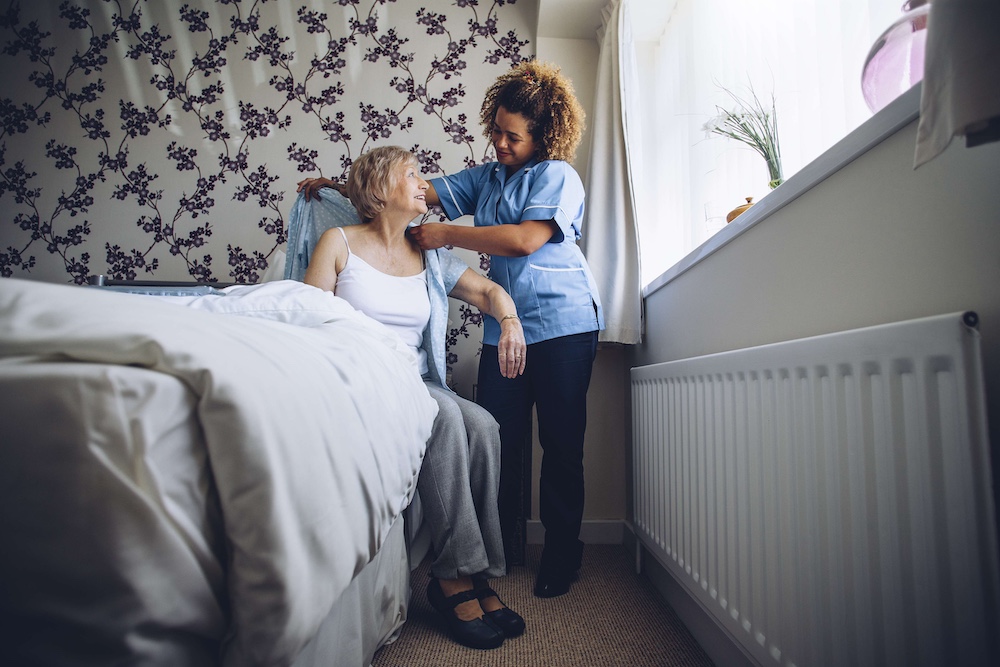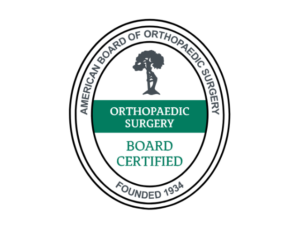What you need to know about Occupational Therapy after a hip or knee replacement
Occupational Therapy After Hip or Knee Replacement Surgery
Despite what its name suggests, occupational therapy after you’ve had a hip or knee replacement surgery is not about re-learning the tasks associated with your occupation. In fact, it probably has nothing at all to do with your occupation. Rather, it focuses on helping you safely and successfully regain the ability to do many everyday tasks of daily living. This is particularly important in the early postoperative period. Your successful return to the activities you did before surgery is the most encouraging indication that your surgery was a success and you are on the road to recovery.
Occupational therapy (OT) is not the same as physical therapy (PT), although the two disciplines complement one another and play a vital role in recovery. While OT focuses on helping individuals regain independence, preventing falls and managing daily tasks, PT focuses on building strength, range of motion and mobility. It is similar to the type of exercise routine you might practice with a personal trainer. Occupational therapists who work for home health organizations are trained to visit you in your home and offer helpful solutions for overcoming challenges associated with essential activities of daily living, such as eating, dressing, bathing, using the commode and other tasks.

A Safe Home Environment
Most people, particularly those who have help and companionship at home, are discharged from the hospital the same day or within a day after surgery, with a prescription from the surgeon for several weeks of home-based occupational and physical therapy. During the first visit, the occupational therapist typically assesses the patient’s strength, mobility and balance and makes safety recommendations for getting in and out of bed, using the commode, shower and bathtub. He or she will suggest ways to adapt the home environment to best meet the patient’s needs. This may include using a shower chair, a riser for the commode, safety rails near the shower and commode, adding night lights and removing area rugs and other hazards. The occupational therapist also will show the patient the best ways to use a wheelchair, walker and cane if they are required. Most patients will not require these after healing.
Getting Dressed
Who could have guessed that getting dressed could be so hard? For some, these daily tasks can feel overwhelming after surgery. The good news is that these challenges are almost always temporary and continue to improve day-by-day. For those patients who have had their hip replaced and were cautioned against placing their leg in certain positions or those patients who have had their knee replaced and are struggling to flex it, putting on your socks or pants can be challenging. The occupational therapist may recommend that you purchase a device designed to make it easier by putting the sock over a plastic tube and using its cords to lower it to your foot and pull the sock up. The occupational therapist will show you how to use a shoehorn and a grabber to reduce or eliminate the need for bending over and the easiest way to slide your legs into your pants. These early post-surgical challenges become easier and easier with time and practice and for most, become a non-issue after healing.

Shower and Tub Safety
The inherent dangers of stepping into or out of a slippery tub or shower are obvious. Your occupational therapist will show you how to enter and exit the tub or shower safely. Placing a shower stool into your shower makes showering safer and more comfortable. There is nothing like a shower and to wash your hair to make everyone “like a human being,” I encourage my patients to shower as soon as they get home. I discourage soaking a tub until after the suture is removed.
A Holistic Approach to Healing and Rehab
The best “silver bullet” for faster healing after a hip or knee replacement surgery is learning what to expect before and after your surgery and developing a post-operative plan, even if your plan needs to change. Also, those patients who go into surgery in better physical shape tend to get well faster and have a better experience. I’ve published two little booklets which I give to my patients titled Preparing for Your Hip (or Knee) Replacement Surgery that outlines the entire process from your first appointment to healing. It also provides specific exercises that I encourage before and after surgery. Patients constantly let me know how much they appreciate and learned from these little books. Both booklets are downloadable in both Spanish or English on my website holycrossleonecenter.com.
Your surgeon, all the folks who helped you get ready for surgery, through surgery, and home, as well as you OT and PT are part of the same team whose only focus is to help you heal, recover and fully get back to activities that you love the most.
The Leone Center for Orthopedic Care at Holy Cross Hospital is located at 1000 NE 56th Street in Fort Lauderdale. For more information or to schedule a consultation please call 954-489-4575 or visit holycrossleonecenter.com.





